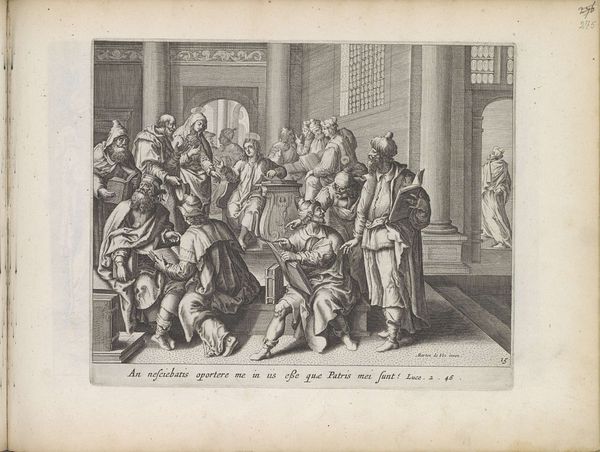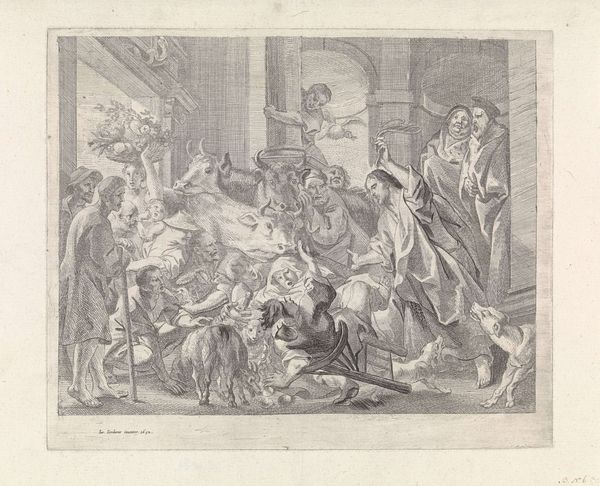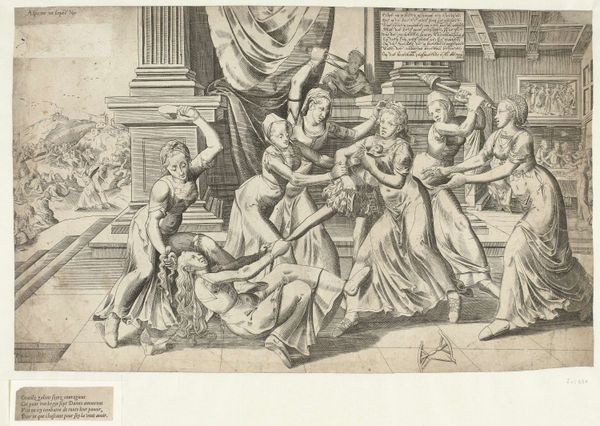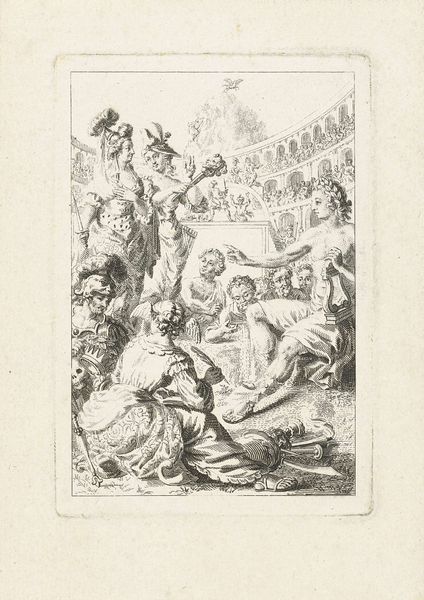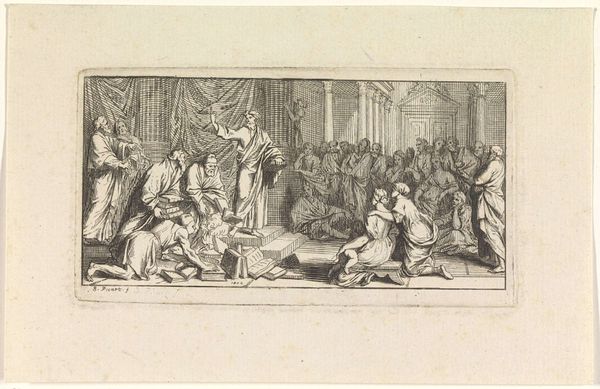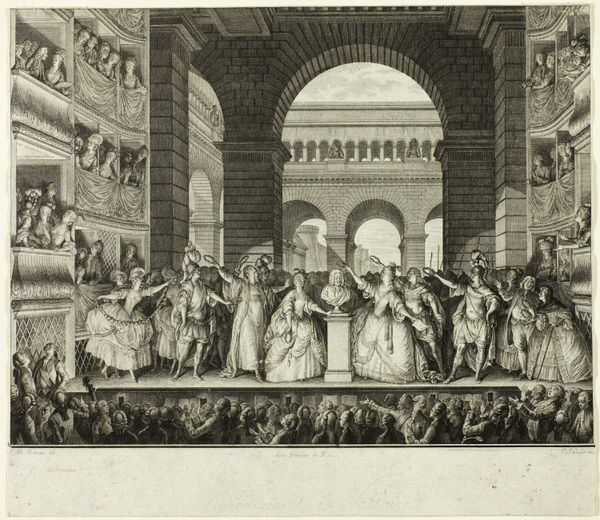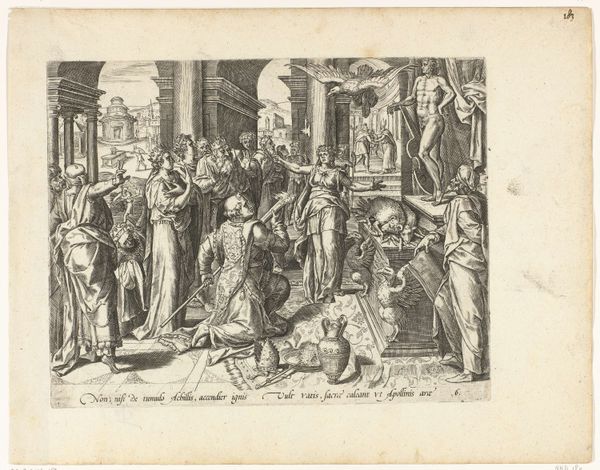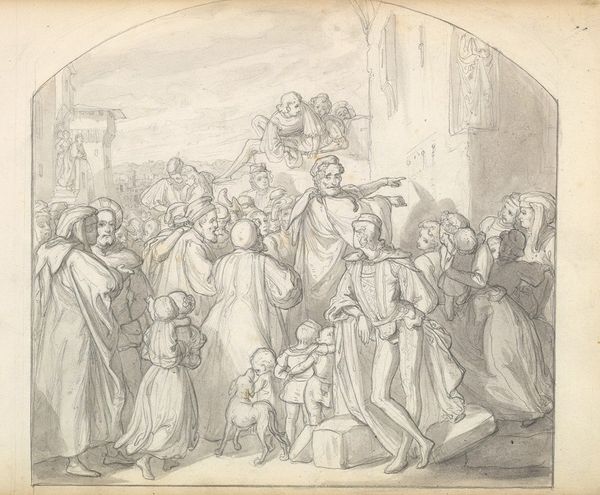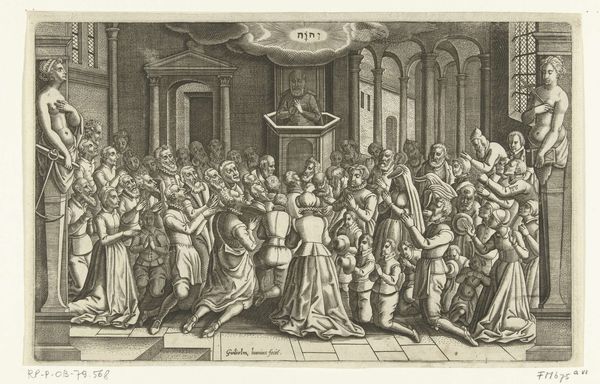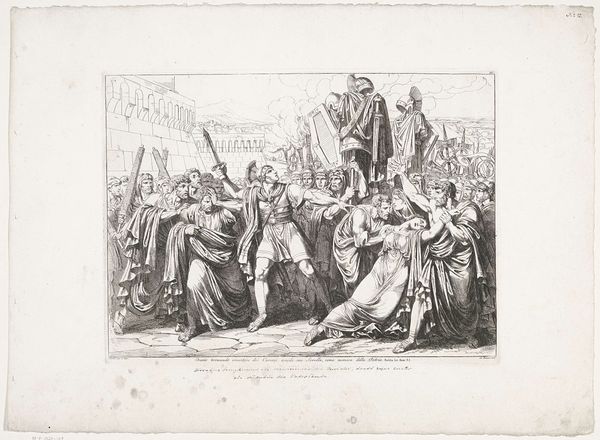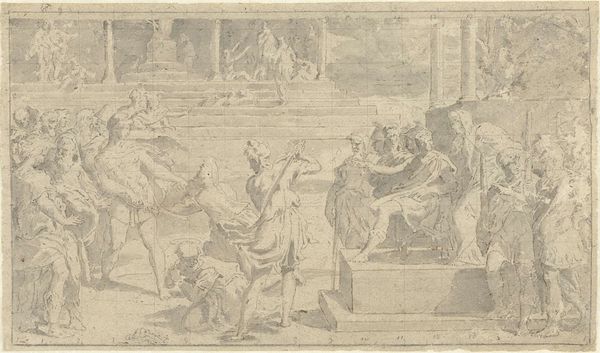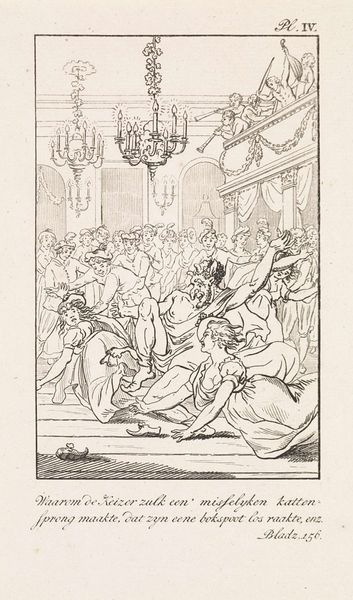
print, etching
#
allegory
#
baroque
# print
#
etching
#
landscape
#
figuration
#
genre-painting
#
history-painting
Dimensions: height 194 mm, width 255 mm
Copyright: Rijks Museum: Open Domain
Curator: This etching by Theodoor van Thulden, executed between 1632 and 1633, depicts "Odysseus on the Island of Circe". My initial impression is one of orchestrated chaos, wouldn’t you say? The eye is bombarded with detail, yet drawn to the clear division of spaces and grouping of figures. Editor: Precisely. The composition is intricate, nearly labyrinthine. Van Thulden's management of space directs our focus through a series of distinct planes – the foreground ship, the central mass of men, Circe’s palace – to give insight on how knowledge of antiquity shaped Early Modern visual culture and its complex narratives. Curator: Observe how the lines delineate form, emphasizing musculature and the contours of draped fabric, very much within the Baroque aesthetics he was emulating from his time in Italy. However, it lacks dramatic lighting effects which makes the tonal range feel flattened. This could be intentional for a narrative clarity or because of the limitations of the etching process. Editor: Considering its cultural context, one cannot overlook the narrative impact this work attempts to convey: the dangers of pleasure and its transformative power. These ideas, found within Homer's Odyssey, could allow Early Modern viewers to engage more broadly with themes of temptation, exile, and what constituted ‘civilized’ behavior. Circe herself could also be construed as an allegory of female power and agency as something 'unnatural’ – further exemplified with these men reduced to animal-like states! Curator: Fascinating how van Thulden manipulates space, with the palace a stark counterpoint to the natural chaos below it. Look how each head is meticulously rendered, creating both uniformity, by keeping with its black and white print restrictions, and individualization. Editor: Such artistic depictions also fulfilled specific political and pedagogical functions, in shaping moral attitudes or promoting dynastic self-fashioning. “Odysseus on the Island of Circe” would’ve given a wider range of society a view into not only mythological worlds, but social issues that remained quite important at this time. Curator: It is this intersection of structure and narrative that renders the print a triumph, despite the initial sense of unease and cacophony that this work can impart on its viewers. Editor: A perspective rooted deeply in the historical reception of art. Thank you.
Comments
No comments
Be the first to comment and join the conversation on the ultimate creative platform.

